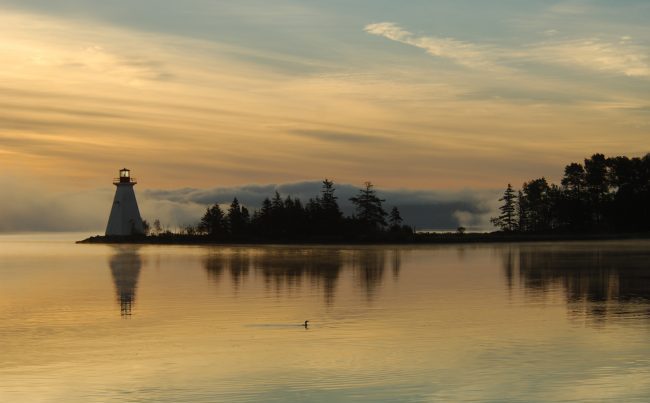
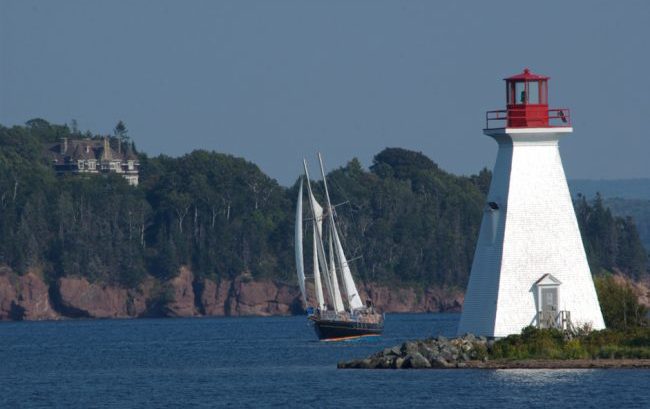
Cape Breton Island
According to Cape Breton Tourism, the Island of Cape Breton, Nova Scotia, is rated as the top island to visit in North America.
A green getaway dotted with lakes and washed by the blue waters of the Gulf of St. Lawrence and the Atlantic Ocean, it lures tourists from the four corners of the world.
One top spot is the village of Baddeck, the jewel of Cape Breton. Its population of 900 lives among green forests and along the deep blue waters of a shimmering bay.
The village is at its best bursting with colors from spring to autumn, when the downtown shopping area is filled with baskets and boxes overflowing with flowers, ivies and all things colorful to celebrate the blossoming warm seasons.
With its identity as a bustling resort town during the high seasons, its special character remains as a quaint village.
Instead of tourists changing the face of this destination, Baddeck turns the tourist into a Baddeckian – calm, at ease with nature, enjoying the cleanliness of unadulterated air and water.
Outdoor Activities
Outdoor activities abound – sailing regattas, bird-watching, hiking, biking, fishing, horseback riding and in the winter, dog-sledding.
Even Baddeck’s theatre productions or Ceilidhs are embedded in the culture of the village. Held during the evenings, the lively performances are reminiscent of the bygone days of public theatre.
Go ahead and ask anyone in Baddeck about events and sites because in this center of the Cabot Trail, it is also the home and heart of hospitality in Cape Breton.

Sailing on Bras d’Or Lake: Nova Scotia
We had come to Baddeck to sail for a while on the rolling waves of the Bras d’Or Lake, the largest inland sea in Canada.
Soon we were comfortably seated on Captain John Bryson’s ship, Amoeba Schooner, a 20 m (67 ft) hand-crafted vessel. The schooner sleeps 8 comfortably, and can take up to 42 passengers per tour.
His voice boomed, “Sit down folks! Remember, this is not the Titanic. The schooner was built not to tip over.”
The schooner which was built by John’s father in the 1970s, and had already made six trips to the Caribbean.

“Look! See the bald eagles overhead?” he asked us.
All eyes on board watched as Captain John threw frozen fish into the water and eagles swooping down to grab the fish.
It was like a picture out of the movies, the beautiful creatures of the sky being fed by human hands.
The picturesque scene ended with the voice of Captain John booming. “Did you know that eagles mate in mid-air?
That’s why we have the expressions ‘the Mile-High club’ and ‘I don’t give a flying f*** ’ and the term ‘quickie’.”
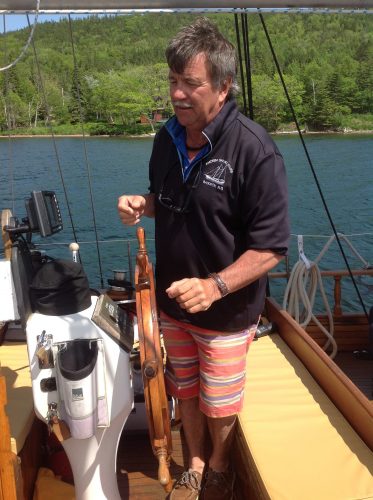
The sun was shimmering on the waters as our boat slowly moved along the bay. Captain John kept us entertained with his jokes and anecdotes.
For him, life is good. His attachment to his schooner, the care-free life atop the waters and his true love of Baddeck gave the passengers a feeling of comfort and ease.
One of the passengers asked, “What type of people do you take sailing every day?” He did not hesitate. “Oh! I take all types of groups.
Wedding parties, birthday and anniversary celebrants, school groups, and any other organizations you can think of.
But my best groups are always those who are here to celebrate divorce. There’s usually only one person missing.”
Still laughing from John’s jokes, we cruised by and caught glimpses of Alexander Graham Bell’s summer mansion Beinn Breaugh that sits atop a forested hill.
Dotted along the same hills are the homesteads of Bell’s descendants. I reflected on this great inventor’s legacy and how he added to the way of life of the modern age and also how he changed the course of Baddeck’s history.
Bell loved the scenery around Baddeck which inspired his great works. Baddeck felt like home to Bell and reminded him of the Scottish Highlands from which he hailed. He lived, loved and created in this ethereal setting.
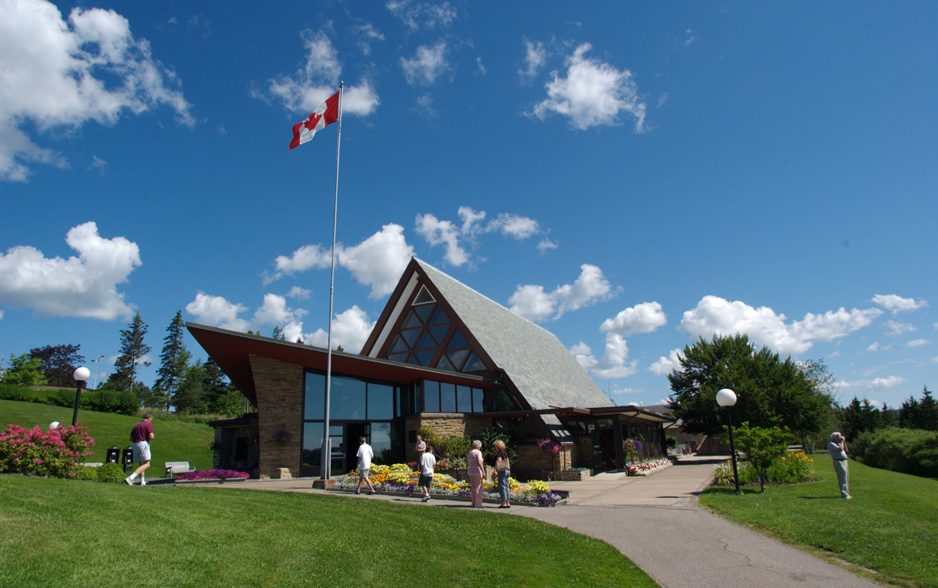
Past the Bell remains, Captain John gently turned the schooner around and we were on our way back. The rolling waves gently caressed the schooner.
The air combined with the drops of water off the sea gave me a feeling of calmness. The sloping green hills added beauty to our small schooner atop the water, making the scene a picture postcard of beauty.
Captain John, still entertaining us, asked if we wanted to have a look at new reading material that he claimed he “couldn’t put down.”
“Sure!” we all said. He pulled out a large paperback and displayed it promptly. “Sailing for Dummies is my new bedtime reading!” Even the comedy added to my relaxed state.
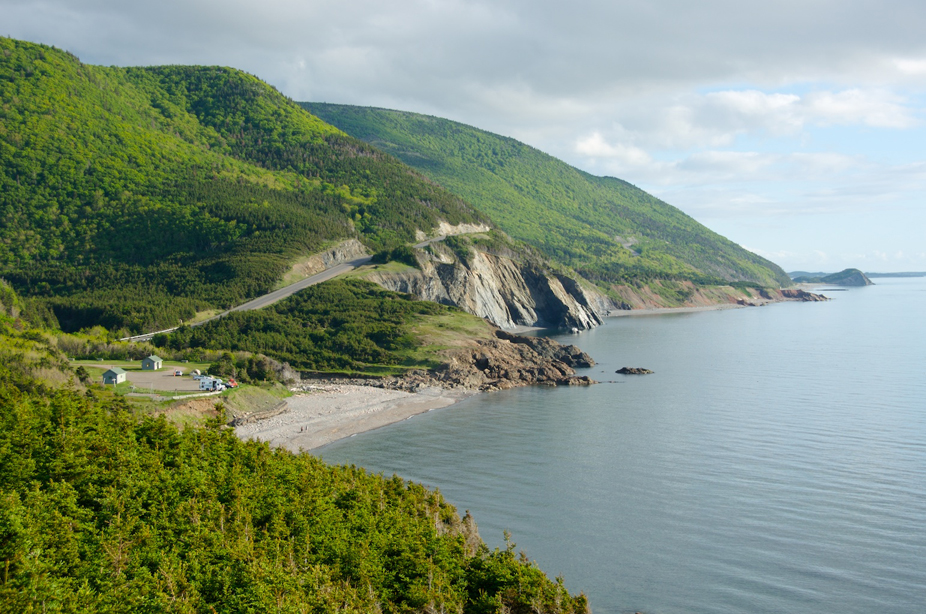
I sat back enjoying the brisk pure air and slightly cool breeze enveloping my body. It was a fitting end to a few hours of sailing amid the breathtaking vistas of Baddeck and its allurements.
After we docked some of the passengers headed towards the nearby Alexander Graham Bell Museum while others stood in groups discussing the cruise.
As we left, my daughter turned to me and said: “I don’t know what I enjoyed more – the jokes, or the soothing breezes or the people on board. Baddeck has a way of helping you forget life’s worries.”
If You Go to Cape Breton, Nova Scotia
It’s best to have your own car or rent an auto when visiting Cape Breton. Taxis are rare, and be aware that gas stations are a few and far in between.
For lunch, a must-visit is the Chanterelle Country Inn & Cottages where the halibut is divine.
Served with roasted garlic and cherry tomatoes, the dish diffuses the flavors of Cape Breton: 48678 Cabot Trail, Baddeck, Nova Scotia B0E 1B0; tel: 1-902-929-2263, toll-free: 1-866-277-0577; email: [email protected]; website: chanterelleinn.com .
For dinner, the Bite House is the place to be. However, reservations must be made weeks in advance. The 12-seat restaurant is located in a fully-renovated 100-year old farmhouse just on the outskirts of Baddeck.
Guests are given a 5-course meal, all gourmet dishes are created from local organic ingredients. Dinner is $60 CAD plus tax.
The menu changes monthly: 1471 Westside Baddeck Road, Baddeck, Nova Scotia B0E 1B0; tel: 1-902-322-1436; email: [email protected] ; website: https://thebitehouse.com/
Accommodation: if you prefer experiencing 19th century Canadian history, consider lodging at the Telegraph House Hotel. Built in 1861, is owned and operated by the 5th generation Dunlop Family.
This is where the first office of the Trans-Oceanic Cable Company was located and where the first telegraph messages were sent from North America: 479 Chebucto Street, Baddeck, Nova Scotia B0E 1B0; Tel: 1-902-295-1100, Toll-free: 1-888-263-9840; email: [email protected] ; website: https://www.baddeckhotel.com/index.html#bottom
Sailing Bras d’Or Lake in Baddeck, contact: Captain John Bryson, Baddeck Wharf, Cape Breton, Nova Scotia; Tel: 1-902-295-1456; website: www.amoebasailingtours.com
Author Bio: Habeeb Salloum is a Canadian author who has been writing for close to 40 years. He is author of From the Lands of Figs and Olives: Over 300 Delicious and Unusual Recipes from the Middle East and North Africa (Interlink Publishing, 1996); Journeys Back to Arab Spain (The Middle East Studies Center, 1994); Arabic Contributions to the English Vocabulary (Librairie du Liban, 1996); Classic Vegetarian Cooking From the Middle East and North Africa (Interlink Publishing, 2000); Arab Cooking On A Saskatchewan Homestead: Recipes And Recollections (CPRC, University of Regina. 2005) – winner of the Cuisine Canada and The University of Guelph’s Silver Canadian Culinary Book Awards in 2006, Bison Delights (CPRC, University of Regina, 2010) and The Arabian Nights Cookbook (Tuttle Publishing, 2010). He co-authored with Leila Salloum Elias and Muna Salloum, two major research studies on medieval Arab cookery: Scheherazade’s Feasts: Foods of the Medieval Arab World (University of Pennsylvania Press, 2013); and Sweet Delights from A Thousand and One Nights: The Story of Traditional Arab Sweets (I.B. Tauris, London, UK, 2013). His most recent cookbook published in the Fall of 2014 is Asian Cooking Made Simple: A Culinary Journey Along the Silk Road and Beyond (Sweet Grass Books/Far Country Press, 2014). For more details, see https://www.amazon.com/Habeeb-Salloum/e/B001K8QSXY.
- How to Renew a US Passport Quickly and Affordably - April 19, 2024
- 6 Reasons to Visit Portland, Maine (+ Travel Tips) - April 18, 2024
- Cruising with Discovery Princess on the Mexican Riviera - March 30, 2024
